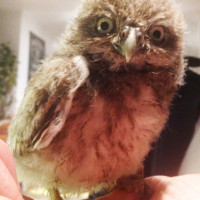
It has to be said that this small owl is one of the most charismatic in the UK, an introduced species, it is also the most diurnal of our owls, commonly seen throughout the day. Not only seen but heard, as the range or calls, from yaps to screeches is unmistakeable. Being the smallest of the owls means that vigilant observation and constant hiding are essential, as no doubt everything resembles a monster when you stand 20cm tall. White feathers around the eyes create a grumpy look and light feathers replicate eye shapes on the back of the head, offering a semblance of protection from those sneaking up behind who might double think their approach for just a second or two, allowing this little bird time to hide. They don’t move far from their range, using bushes and old buildings and trees to hide and shelter in, their flight is a short flap-flap-glide, similar to that of the woodpecker. Their feed source is mostly beetles and insects, along with a few small mammals.
Today, numbers appear to be falling, for those who watch and count these birds, concern is significant and one can only question the level of crop treatment, its chemical content and in particular the pesticides that will alter the shape of availability and chemically enhanced consumption. It is unclear whether this small owl earns the same level of protection being non-native, however if you have not yet experienced this gem, do ask around and find an active site where you can spot and in particular, hear this wonderful owl.